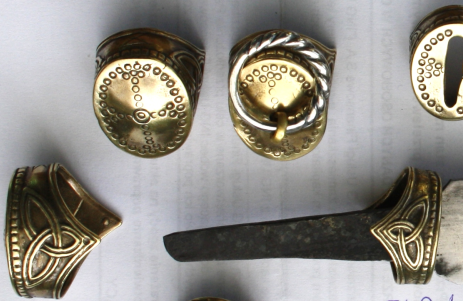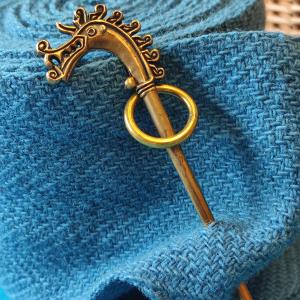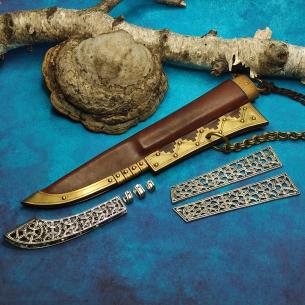The appearance of popular historical knives and scramasaxes (long single-edged knives) from the Viking period often has decorations not only on the flashy knife cover, but also on the handle. The precious metal wire wrappings, rivets, intricate ornate fittings and carvings, and especially the distinctive pear-shaped decorations at the end of the handle, give the weapon its significance as an ornament and symbol of power.
The classic example here, Birka hump 534.
The ornamental finial, which is visible from the sheath of the knives, is also often accompanied by a ring to aid in the drawing of knives and seax. The occurrence of such ornamentation is so common that we can highly recommend the use of ornaments.
Ordinary utility knives for slicing salami and chopping branches for the campfire may not have it, nor is it appropriate for them.

An example of the use of our decorative fittings on knife handles.
They can be fixed by sliding, gluing and possibly riveting. On the part of the fitting to finish the handle, there is only a suggested dot where the rivet might lead, but it is not pierced. Likewise, the basic version is slightly hollowed out and you can also punch through it and attach a ring to pull the knife out of the sheath.
Aside from the decoration, the fittings have the advantage of hiding any manufacturing flaws when the blade is installed.
Decorated with the popular Viking triquetra and small rings.
Dimensions:
Pear (end of knife): 14 g, 28 x 2.2 cm, depth approx. 2 cm, measured from the tip
Guard (at the blade): 8.5 g, 2.5 x 1.9 cm, 1.5 cm deep, pre-prepared drop-shaped hole 1.5 - 4 mm































